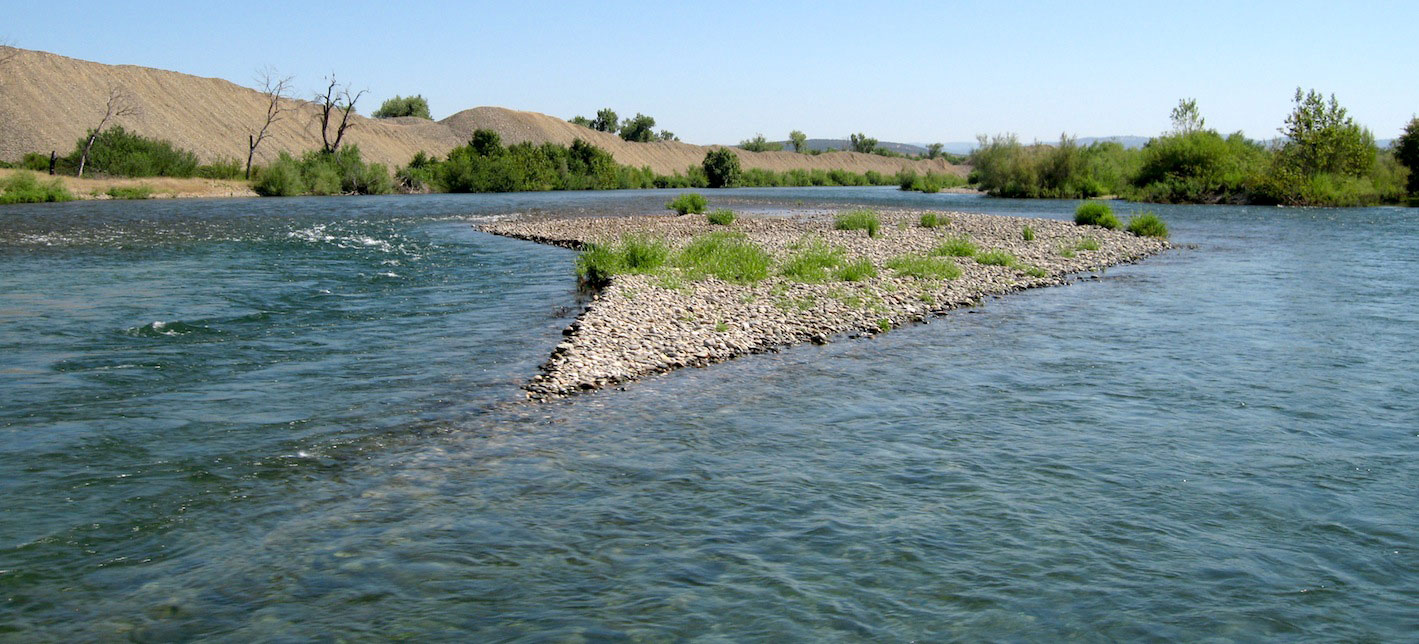Chaos in Hydrology
Participants
Gregory B. Pasternack
Background
It is now well established that the atmospheric system leading to instantaneous weather is chaotic, which means that it exhibits deterministic, nonperiodic fluctuations with a sensitive dependence on initial conditions. Studies using the most sophisticated models available demonstrate that even if Global Circulation Models could perfectly simulate the atmosphere, the predictability of weather variables would approach zero for forecasts beyond two weeks.
Hydrological systems produce runoff, infiltration, evapotranspiration, and surface storage from precipitaiton. Through their dependence on the atmosphere for precipitation, hydrologic systems are likely to be chaotic, but it is difficult to say, because the Earth's near-surface and biosphere strongly mediate the precipitaiton signal. Scientists have sought to quantify whether hydrological systems are in fact chaotic, just as they have for many othe rkinds of dynamical systems in nature and civilization. Attempts to quantify the chaotic nature of hydrologic systems have largely relied on calculations of the Correlation Dimension (Dc) for given time series using a procedure called Correlatron Integral Analysis (CIA). Ideally this method is coupled with other indicators, but this has been themost heavily used metric. If Dc is non-integer then the dimension is fractal and the time series is likely to be chaotic.
Project Findings
While I was working on my PhD doing weekly monitoring of biophysicla processes for two years, I had time to look into the procedures, constraints, and past usage of CIA in hydrology. I also added a new analysis of daily streamfow from a pristine watershed that was the longest series investigated thus far. My assessment of reported CIAs in geosciences was presented at the 16th Annual Hydrology Days meeting held at Fort Collins, CO in 1996 and later published in the journal Advances in Water Resources in 1999 (23:253-260). I found that the great majority of claims of chaos are unfounded, because of a lack of data and/or the failure to apply various numerical constraints that are commonly overlooked when doing CIA analysis. Of the successful CIAs, most fail to find any low dimensionl attractor. To explain why a chaotic mechanism is unlikely to govern daily streamflow, I did an experiment showing that the infrequent occurrence of large floods cannot be accounted for by a low-dimensional attractor.
The conclusion is that instead of looking for a quick magic bullet for hydrological forecasting, we have to stay focused on genuine complex methods that account for the natural blend of deterministic and stochastic processes existing in reality.
Publications
- Pasternack, G. B. 1999. Does the river run wild? Assessing chaos in hydrological systems. Advances in Water Resources 23:3:253-260.
- Pasternack, G. B. 2001. Reply to "Comment on 'Does the river run wild? Assessing chaos in hydrological systems' by G. B. Pasternack". Advances in Water Resources 24:5:578-580.


